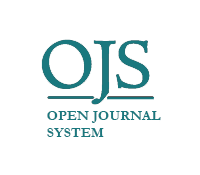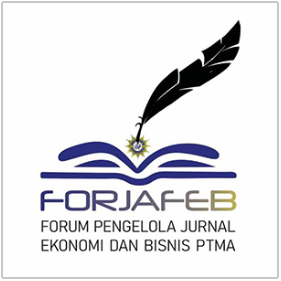Fraud Hexagon Theory And Fraudulent Financial Statement In IT Industry In Asean
DOI:
https://doi.org/10.22219/jrak.v12i3.23334Keywords:
Fraudulent Financial Statement, Fraud Hexagon Theory, F-Score Model, Information TechnologyAbstract
This study aims to determine what factors influence fraudulent financial statements. Factor analysis of financial statement fraud uses fraud hexagon theory with financial target and external pressure variables to represent pressure, director change and CEO's education factors to represent capability, effective monitoring, and whistleblowing system factors to represent opportunity factors, total accrual ratio to represent rationalization, CEO's duality to represent ego and audit fees to represent collusion. Financial statement fraud is detected using the F-Score Model. The research sample is comapanies engaged in the information technology industry which is listed on S&P Capital IQ in the 2019-2021. Data was collected by purposive sampling method. The data processing method uses the Panel Data Regression Analysis with Fixed Effect Model (FEM). The results of the study show that financial targets have a positive effect on fraudulent financial reporting. Then, external pressure, rationalization and collusion have a negative effect on fraudulent financial statements. Meanwhile, director change, CEO's education, effective monitoring, whistleblowing system, and ego does not influence fraudulent financial statements. This research can be used as a reference for shareholders to prevent factors that can cause fraudulent financial reporting.
Downloads
References
Achmad, T., Ghozali, I., & Pamungkas, I. D. (2022). Hexagon Fraud: Detection Of Fraudulent Financial Reporting In State-Owned Enterprises Indonesia. Economies, 10(1). https://doi.org/10.3390/economies10010013
Alfarago, D., & Mabrur, A. (2022). Do Fraud Hexagon Components Promote Fraud In Indonesia? ETIKONOMI, 21(2), 399–410. https://doi.org/10.15408/etk.v21i2.24653
Anggono, A., Sakti, E., & Tarjo. (2021). Detecting Indications Of Financial Statement Fraud: A Hexagon Fraud Theory Approach. AKRUAL: Jurnal Akuntansi, 13(1), 2085–9643. https://doi.org/10.26740/jaj.v13n1.p119-131
Association of Ceritified Fraud Examiners. (2022). Occupational Fraud 2022: A Report To The Nations.
Aviantara, R. (2021). The Association Between Fraud Hexagon And Government’s Fraudulent Financial Report. Asia Pacific Fraud Journal, 6(1), 26. https://doi.org/10.21532/apfjournal.v6i1.192
Dewi, K., & Anisykurlillah, I. (2021). Analysis Of The Effect Of Fraud Pentagon Factors On Fraudulent Financial Statement With Audit Committee As Moderating Variable. Accounting Analysis Journal, 10(1), 39–46. https://doi.org/10.15294/aaj.v10i1.44520
Handoko, B. L. (2021). Fraud Hexagon Dalam Mendeteksi Financial Statement Fraud Perusahaan Perbankan Di Indonesia. Jurnal Kajian Akuntansi, 5(2), 2579–9975. http://jurnal.ugj.ac.id/index.php/jka
Imtikhani, L. (2021). Determinan Fraudulent Financial Statement Melalui Perspektif Fraud Hexagon Theory Pada Perusahaan Pertambangan. Jurnal Akuntansi Bisnis (Vol. 19, Issue 1).
Januari, D. M. D., & Suardikha, I. M. S. (2019). Pengaruh Corporate Social Responsibility, Sales Growth, Dan Profitabilitas Terhadap Tax Avoidance. E-Jurnal Akuntansi, 1653. https://doi.org/10.24843/eja.2019.v27.i03.p01
Jensen, M. C., & Meckling, W. H. (1976). Theory Of The Firm: Managerial Behavior, Agency Costs And Ownership Structure. In Journal of Financial Economics (Vol. 3). Q North-Holland Publishing Company.
Kusumosari, L., & Solikhah, B. (2021). Analisis Kecurangan Laporan Keuangan Melalui Fraud Hexagon Theory. Fair Value Jurnal Ilmiah Akuntansi Dan Keuangan, 4(3), 753–767.
Lastanti, H. S., Murwaningsari, E., & Umar, H. (2022). The Effect Of Hexagon Fraud On Fraud Financial Statements With Governance And Culture As Moderating Variables. Media Riset Akuntansi, Auditing & Informasi, 22(1), 143–156. https://doi.org/10.25105/mraai.v22i1.13533
Oktrima, B. (2017). Pengaruh Profitabilitas, Likuiditas, Dan Struktur Modal Terhadap Nilai Perusahaan. Jurnal Sekuritas (Saham, Ekonomi, Keuangan Dan Investasi), 1(1), 98–107.
Putra, A. C., & Wiratmaja, I. D. N. (2019). Pengaruh Profitabilitas Dan Kompleksitas Operasi Pada Audit Delay Dengan Ukuran Perusahaan Sebagai Variabel Moderasi. E-Jurnal Akuntansi, 2351. https://doi.org/10.24843/eja.2019.v27.i03.p26
Riley, R., & Kranacher, M.-J. (2019). Forensic Accounting And Fraud Examination (2nd ed.). Wiley.
Sa’diyah, S. H., & Suhartini, D. (2022). Pengaruh Book-Tax Differences Dan Arus Kas Operasi Terhadap Persistensi Laba Dengan Good Corporate Governance Sebagai Variabel Moderasi. Jurnal Ilmiah Komputerisasi Akuntansi, 15(1), 74–88. https://doi.org/10.51903/kompak.v15i1.608
Sagala, S. G., & Siagian, V. (2021). Pengaruh Fraud Hexagon Model Terhadap Fraudulent Laporan Keuangan Pada Perusahaan Sub Sektor Makanan Dan Minuman Yang Terdaftar Di BEI Tahun 2016-2019. Jurnal Akuntansi, 13(2), 246–259. https://doi.org/10.28932/jam.v13i2.3956
Skousen, C. J., Smith, K. R., Wright, C. J., & Chasteen Chair, L. G. (2008). Detecting And Predicting Financial Statement Fraud: The Effectiveness Of The Fraud Traingle And Sas No. 99. https://doi.org/10.1108/S1569-3732(2009)0000013005
Vousinas, G. L. (2019). Advancing Theory Of Fraud: The S.C.O.R.E. Model. Journal Of Financial Crime, 26(1), 372–381. https://doi.org/10.1108/JFC-12-2017-0128
Weygandt, J. J., Kieso, D. E., & Warfiled, T. D. (2017). Intermediate Accounting: IFRS Edition (3rd ed.). Wiley.
Wicaksono, A., & Suryandari, D. (2021). The Analysis Of Fraudulent Financial Reports Through Fraud Hexagon On Public Mining Companies. Accounting Analysis Journal, 10(3), 220–228. https://doi.org/10.15294/aaj.v10i3.54999
Wolfe, D. T., & Hermanson, D. R. (2004). The Fraud Diamond: Considering The Four Elements Of Fraud. https://digitalcommons.kennesaw.edu/facpubs
Downloads
Published
Issue
Section
License
Copyright (c) 2022 Tanggor Sihombing, Giena Eirene Panggulu

This work is licensed under a Creative Commons Attribution-NonCommercial-ShareAlike 4.0 International License.

Jurnal Reviu Akuntansi dan Keuangan is licensed under a Creative Commons Attribution-NonCommercial-ShareAlike 4.0 International License.
Authors who publish with this journal agree to the following terms:
- Authors retain copyright and grant the journal right of first publication with the work simultaneously licensed under a Creative Commons Attribution-NonCommercial-ShareAlike 4.0 International License that allows others to share the work with an acknowledgement of the work's authorship and initial publication in this journal.
- Authors are able to enter into separate, additional contractual arrangements for the non-exclusive distribution of the journal's published version of the work (e.g., post it to an institutional repository or publish it in a book), with an acknowledgement of its initial publication in this journal.
- Authors are permitted and encouraged to post their work online (e.g., in institutional repositories or on their website) prior to and during the submission process, as it can lead to productive exchanges, as well as earlier and greater citation of published work (See The Effect of Open Access).










